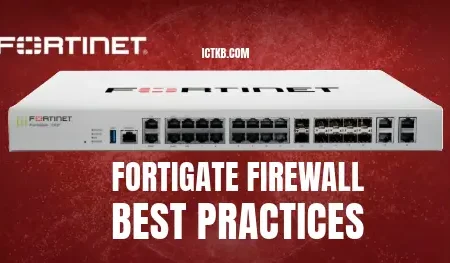In today’s digital landscape, network performance is paramount. Businesses rely on smooth, uninterrupted network traffic flow for user productivity and critical operations. While Fortinet FortiGate firewalls are renowned for their robust security features, improper configuration can lead to performance bottlenecks.
Let’s go through some key strategies to optimize your FortiGate firewall for peak performance, ensuring your security doesn’t come at the cost of sluggish network speeds:
1. Security Policy Optimization:
- Review and refine security policies: Analyze traffic logs to identify unused rules and consolidate redundant ones. This reduces the processing overhead for the firewall.
- Prioritize security policies: Place the most critical security rules at the top of the policy list for faster processing. This ensures your most important security measures are evaluated first.
- Utilize application control: Leverage FortiGate’s application identification features to create rules based on applications instead of just ports and protocols. This simplifies policy management and reduces processing time.
2. Resource Optimization:
- Traffic shaping: Prioritize business-critical traffic by allocating bandwidth and shaping non-critical traffic during peak usage periods. This ensures smooth operation for essential applications.
- Session management: Tune session timeouts to optimize memory usage. Longer timeouts can consume more memory, impacting performance. However, setting them too low can lead to frequent session re-establishment, also affecting performance.
- Deep Packet Inspection (DPI) optimization: If using DPI features, consider enabling selective inspection for specific applications or protocols. This reduces processing overhead without compromising essential security checks.
3. Hardware and Software Optimization:
- Right-size your firewall: Ensure your firewall has sufficient processing power and memory to handle your typical network traffic volume. Consider upgrading hardware if performance limitations are encountered during peak usage.
- Maintain the latest FortiOS version: Fortinet regularly releases software updates with performance enhancements and bug fixes. Keeping your FortiGate firmware up-to-date is crucial for optimal performance and security.
- Optimize virtualized deployments: If using virtualized FortiGate firewalls, allocate adequate CPU cores and memory resources on the underlying host system. Improper resource allocation in virtual environments can bottleneck performance.
4. Monitoring and Performance Analysis:
- Utilize monitoring tools: FortiGate firewalls offer comprehensive monitoring tools that provide insights into CPU, memory, and traffic flow. Analyze these metrics to identify bottlenecks and optimize configuration accordingly.
- Baseline performance: Establish performance baselines during normal traffic conditions. This serves as a reference point to identify any significant deviations that might indicate performance issues. Regular monitoring allows you to detect potential problems before they significantly impact users.
By implementing these optimization strategies, you can ensure your Fortinet FortiGate firewall delivers robust security without compromising network performance. Remember, optimization is an ongoing process. Regularly monitor performance metrics and adjust configurations as needed to maintain peak performance.






